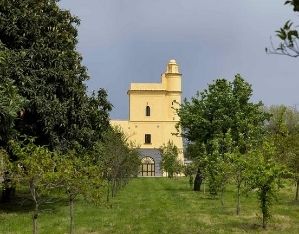Google Maps
Address
Via Miano, 4
80145, Napoli (NA)
Latitude: 40.8725528
Longitude: 14.2510961
How to arrive by road
Take the ring road, exit Capodimonte
How to arrive by train
From Central Station
- Underground line 1, Museum stop; continue by bus
- Underground line 2, Piazza Cavour stop; continue by bus
How to arrive by bus
Stop in Piazza Museo (near the National Archaeological Museum), lines:
- 3M active from 12 September 2020 (Porta Piccola and Porta Miano stops, via Miano)
- 168 and 178 (Porta Piccola stop, via Miano);
- C63 (Porta Grande stop, via Capodimonte);
- 604 (Viale Colli Aminei stop, about 200 m from Porta Piccola)
Routes and times on
Anm.it
The
Capodimonte Shuttle
allows tourists to reach the Museum and the Bosco easily from the city centre. From Piazza Trieste e Trento in just 22 minutes with departures every hour.
How to arrive on foot
There are three itineraries to reach the Real Bosco di Capodimonte on foot:
- The Two Museums itinerary links Capodimonte and the Mann through the Bridge of Health, the Catacombs of San Gennaro, the Niccolini Stairs. (Travel time 30 min – 2 km)
- The itinerary O’ Presepio starts from Porta San Gennaro and goes through the Vergini and Sanità and up the hill through Salita Capodimonte. (Travel time approx. 30 min – 2 km)
- The itinerary Il Moiariello starts from the ex Caserma Garibaldi in via Foria and arrives at Porta Grande going up the Moiariello (Time needed 31 min – 2km)
Additional directions
Special rates for those travelling by taxi to and from the Airport, the Central Station, Molo Beverello and Via Partenope.
Taxi nearby
- Porta Grande stop, via Capodimonte
- Porta Piccola stop (inside the Museum and Real Bosco), via Miano 2





